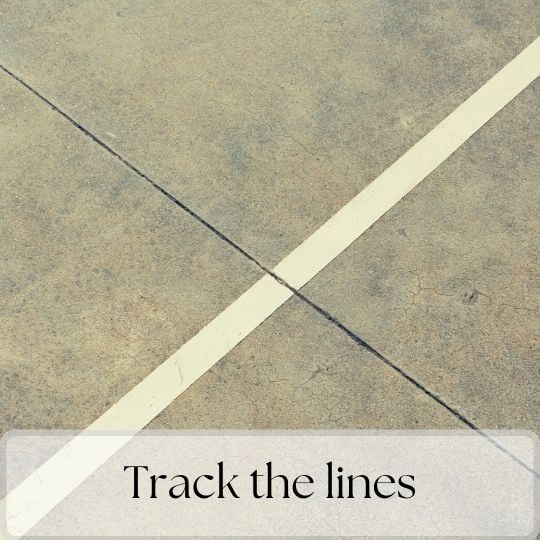Framing the basement walls is an obligatory step in finishing a basement. Seeing the shot materialize and move from paper to reality is always fascinating.
Suppose you decide to frame your basement walls yourself. In that case, you will want to ensure the correct construction and the effective seal of your design.
I have read and studied various online guides and decided to share the steps and tricks that helped me frame the walls correctly.
Framing a basement wall is a simple process that anyone can do with the right tools and materials. There are a few things to keep in mind when framing a basement wall, such as the type of wall you’re working with, the kind of foundation you have, and the height of the ceiling. With a little planning and basic carpentry skills, you can frame a basement wall in no time.
Start with lines

Ok, this is my secret trick that may be for many of you more experienced. It may be trivial, but that has avoided many mistakes in my DIY projects.
It starts on the paper where I define the various walls and their measurements. Then I take some colored tape and begin to draw lines on the ground in correspondence with the walls I have to build, respecting the various measures. If you find some measurement errors in this phase, it will be straightforward to correct them. Better to throw away duct tape than driftwood and time to cut them.
Use the right tools
Having the right tools at hand is another fundamental and often ignored step to frame the walls nicely.
Not only will we do a better job, but we will do it in less time and with less waste.
The essential tools are:
Colored tape for the first few tracks
Plaster
Gloves
You can recycle the ones you have at home, or if you don’t know which one to choose, you can find my personal selection at the bottom of this article.
In the proposed videos, you will see the various professionals also use other tools, such as lasers. These tools are certainly useful for those who do it by trade. They are an excessive expense for those who create a wall every now and then, as I imagine is your case.
The Choice of Wood

Since we are talking about a basement subject to humidity, it will be necessary to use pressure-treated wood. This is because pressed wood is more resistant to moisture and will ensure a longer wall life.
How to frame a basement wall
Useful Tips
In this video, I found many useful tips on how to frame a basement wall. In summary, the video tells us that:
In order to frame a wall, you will need to cut the top and bottom plates to size, then lay out the stud locations. You will need a few tools, including a laser level, a tape measure, and a hammer.
- Always put a stud on end.
- Mark every 16 “.
- Put an x on the right side of the mark to indicate the stud placement.
- Use a square to transfer marks from one plate to another.
- Cut blocks to size and screw them in between the floor joists.
- Measure the distance between the floor joists in several places to get a consistent height for the wall.
- Cut the studs to size and install them in the ceiling.
Complete process
The following video is very long but detailed and covers the various issues when framing walls in a basement.
Here are some ideas from the video:
- To frame a new wall, you will need to install blocking along the edge of the new wall. You will also need to add an extra stud in the corner to support the drywall. *
- To frame a basement wall, you must measure and cut the studs to the correct length.
- It is essential to think ahead when framing, as you will need to consider the needs of the next tradesperson (e.g., the drywaller).
- To attach the wall to the floor, you can use ram set nails or screws.
- When attaching the wall to the joist’s underside, it is essential to make sure that the stud is straight up and down.
Another useful video
Below is a new helpful video with various information already seen but condensed in a better way:
Chuck from Campbell Hospital visits Chris to help him frame the walls in his basement. Chris has researched and is prepared with the proper tools and supplies. They measure and cut the boards for the bottom and top plates, then secure the base plate to the floor. They use a framing nailer to attach the studs to the top and bottom plates, then add insulation with a hot spot air power stapler.





